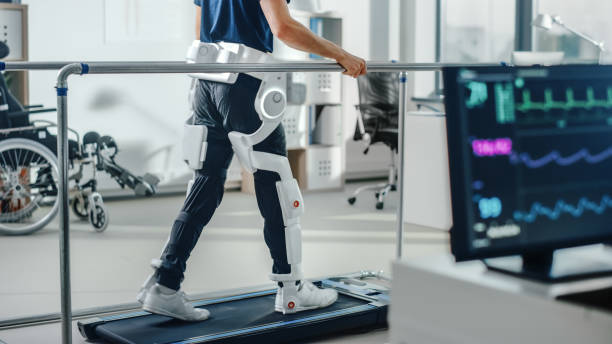Reimagining the Future of Industrial Operations with Exoskeleton Technology
The industrial sector is set for an exciting transformation, poised to disrupt traditional operational processes, and it's all thanks to exoskeleton technology. This article will delve deep into the world of exoskeleton technology, its historical development, and the potential it holds for the future of business and industrial operations.

A Glimpse into the Past: The Genesis of Exoskeleton Technology
Exoskeleton technology, a concept that seemed far-fetched and belonged to the realms of science fiction, has slowly gained traction over the past few decades. The technology’s origin can be traced back to the 1960s when the first powered exoskeleton, named Hardiman, was developed by General Electric. Despite its inability to become commercially viable, it set the foundation for future developments in the field.
The Present Scenario: Advancements and Applications
Fast forward to the present, and exoskeleton technology has moved beyond the confines of experimental labs and military applications. The technology now finds widespread use across various sectors, including healthcare, logistics, construction, and more importantly, industrial operations.
Several businesses have started adopting exoskeleton technology to reduce workforce fatigue, increase productivity, and decrease the risk of occupational injuries. For example, Ford Motor Company started piloting exoskeleton suits in 2018 to assist workers with physically demanding tasks.
The Future: Impact, Benefits, and Challenges
The future of exoskeleton technology in industrial operations looks promising. It has the potential to revolutionize manual labor by augmenting human capabilities, leading to increased productivity and reduced physical strain. However, the technology also brings its share of challenges, including high costs, issues related to user comfort, and regulatory hurdles.
Key Insights and Practical Applications
- Injury Prevention: Exoskeleton technology can significantly mitigate the risk of workplace injuries, leading to improved worker safety and lower compensation costs.
- Productivity Boost: By enhancing human capabilities, such as lifting heavy objects effortlessly, exoskeletons can contribute to significant productivity gains in industrial operations.
- Ergonomic Solution: Exoskeletons can be a long-term ergonomic solution for tasks involving repetitive motions, reducing the risk of musculoskeletal disorders.
Concluding Thoughts
In conclusion, while exoskeleton technology presents an array of exciting possibilities for the future of industrial operations, it also brings several challenges that need to be addressed. However, as the technology continues to evolve and mature, businesses that leverage it effectively stand to reap significant benefits. The future of exoskeleton technology in industrial operations will be a fascinating space to watch, promising a new era of enhanced productivity and worker safety.




